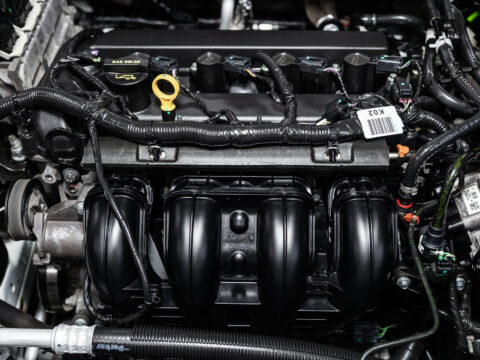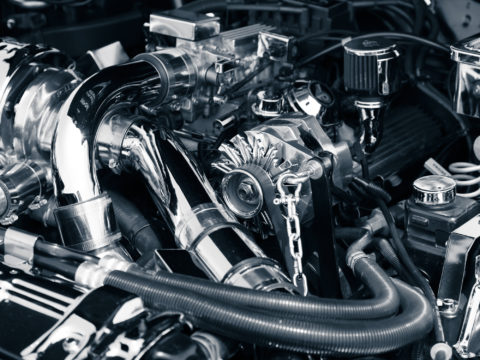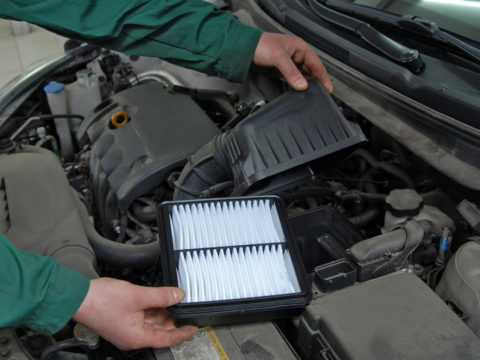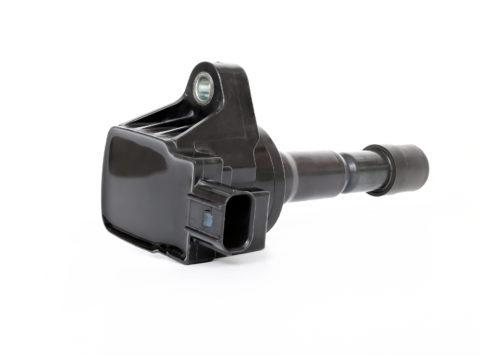If someone told you they think something is wrong with one or both of your oxygen sensors, you may spiral into a fit of questions about these car components.
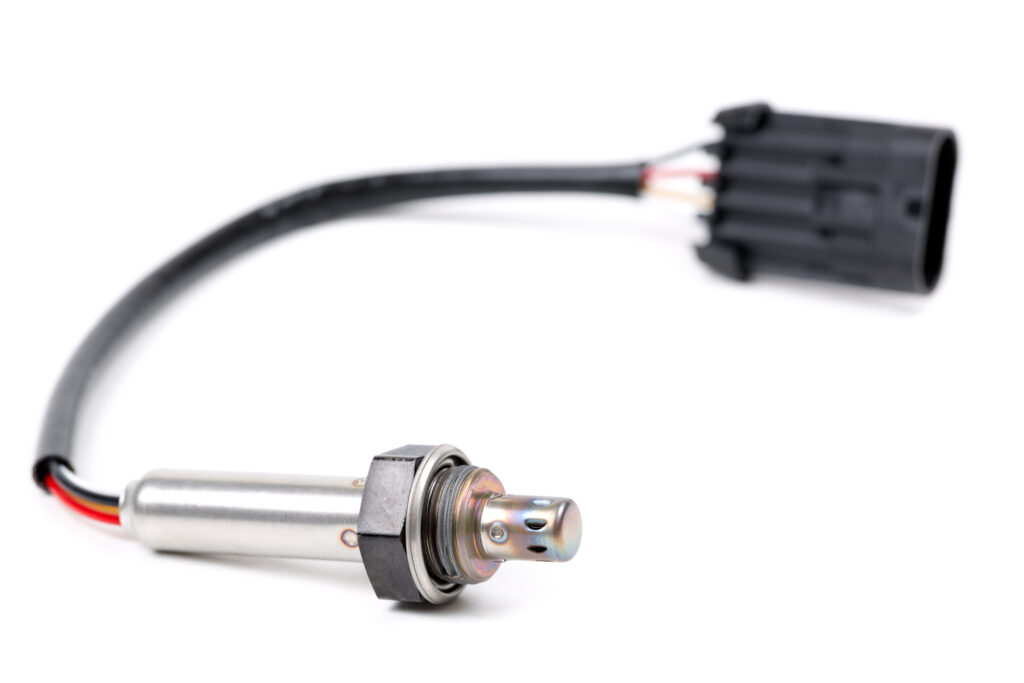
What is an upstream oxygen sensor? What is a downstream sensor? What’s the difference between them?
All your oxygen sensor questions will be answered in this article!
Contents
What Does an Oxygen Sensor Do in a Car?
The oxygen sensor in a car is a vital component that acts as the vehicle’s nose. The sensor takes in data concerning the exhaust to relay information to the car’s computer, like how the human nose takes in scents and tells the brain.
This information helps the vehicle’s computer determine fuel and air adjustments. The sensor helps to minimize pollutants and enhance the engine’s performance.
What Is Upstream Oxygen Sensor?
The upstream oxygen sensor’s main purpose is to measure the pollutant levels leaving the engine. It can determine if there is unburned or raw fuel moving toward the combustion chambers.
Using this information, the vehicle’s computer continuously adjusts the air-to-fuel ratio entering the engine and combustion chambers.
Upstream Oxygen Sensor Location
Since the upstream oxygen sensor’s job is to assess pollutants leaving the engine, it is located before the catalytic converter.
What Is Downstream Oxygen Sensor?
This oxygen sensor measures pollutants after they go through the catalytic converter. The pollutant levels released out of the tailpipe should be lower than the levels reported by the upstream converter.
The downstream sensor measures the pollutant levels exiting through the tailpipe and compares them to the measurements taken by the upstream converter.
If the pollutant levels become too similar or the downstream levels are higher than the upstream levels, something is wrong with the catalytic converter. The sensor will trigger a catalyst inefficiency check engine code, indicating to the driver there is an engine issue.
Downstream O2 Sensor Location
The downstream O2 sensor is on the opposite side of the catalytic converter. The upstream sensor is before the converter, while the downstream sensor is situated after the catalytic converter.
Upstream and Downstream Oxygen Sensor Similarities
If you know little about cars and their inner workings, the upstream and downstream sensors will likely look the same to you. They are different, but they share some characteristics such as functionality and certain design elements worth explaining.
Learn about the similarities between these two sensors below.
Functionality
The upstream and downstream sensors serve slightly different purposes, but their functionality is essentially the same. Both sensors can read the air-to-fuel ratio in the engine.
They use the same mechanisms to collect these measurements and are hooked up to the vehicle’s computer. In some vehicles, the upstream and downstream sensors are interchangeable! But not usually, so don’t try to swap them if you’re unsure.
Cost
Another similarity is the cost of these two automotive parts. While the price will change depending on the type of vehicle, it’s generally in the same range. The price of the sensors is relatively low compared to other parts, such as the catalytic converter.
Installation
As you know, the two sensors sit on either side of the catalytic converter. Because they are close and are built similarly, the installation process is about the same.
If you need to replace both sensors, it will only take a few minutes more than if you just had to replace one. This is good news for you when it comes to mechanic labor costs.
Gaskets
Each sensor has a gasket that seals the sensor tip onto the wires, allowing the air-to-fuel ratio to be measured. Because both sensors are almost the same size, they use the same size and type of gasket to create this essential seal.
Electrical Connectors
The electrical connectors are the component that allows the sensors to communicate with the computer. Since both sensors collect and send data to the computer, they have the same electrical connectors.
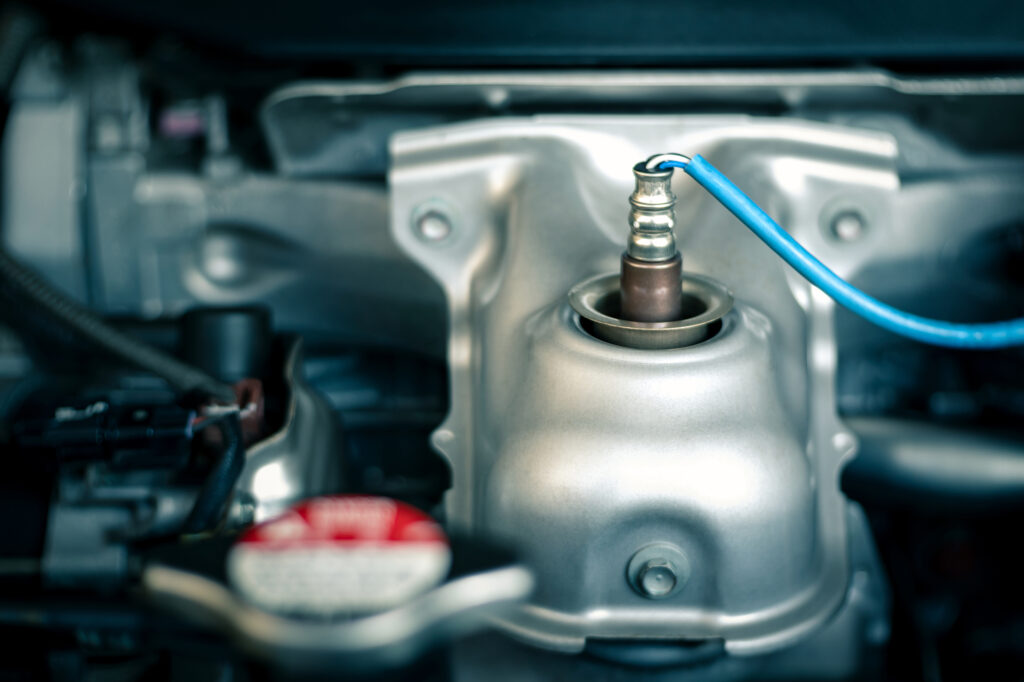
Difference Between Upstream and Downstream Oxygen Sensors
Now that you understand how these sensors are similar, and how easy it is to mix them up, let’s discuss the differences. While these differences can be difficult to notice, the information below will hopefully help you identify an upstream oxygen sensor from a downstream one.
Locations
As discussed above, the locations of these sensors are close to one another, but the difference is extremely important. Both sensors are on one end of the catalytic converter.
The upstream sensor is before the catalytic converter, while the downstream sensor is after the CAT. The difference in locations is important because it allows the sensors to report different measurements needed to perfect the air-to-fuel ratio.
Purposes
While the functionality of the sensors is almost identical, the purposes they serve are different. The upstream sensor’s job is to simply track and report the air-to-fuel ratio leaving the engine and heading to the catalytic converter.
The downstream sensor measures the same thing, but its purpose is to compare the measurements, rather than just report them to the vehicle’s computer. For each sensor to fulfill its purpose, both sensors must work in tandem, as the measurements from one alone are not useful.
Wires
The wires on the sensors communicate with the computer, but they have slightly different setups. The upstream wires deliver information about the richness of the fuel mixture, while the downstream wires communicate the catalytic converter’s efficiency. The wires operate separately, but both sets lead to the ECU.
Body
At a glance, the bodies of the two sensors may look the same, but they are not. In most vehicles, the downstream O2 sensor is slightly larger, taking up more space than the upstream sensor. The upstream sensor often has less metal surrounding the connectors, making it slimmer with a smaller tip.
Sensor Tips
One of the most important differences between the sensors is the tips. Upstream sensors typically have a smaller tip with perforations. On the other hand, the downstream sensor’s end is slightly thicker and more solid, meaning there are no perforations.
Threads
For general purposes, the threads are in the differences category because they usually are different. The thread patterns will usually differ between the sensors, meaning you cannot swap the upstream for the downstream or vice versa.
In the rare cases where the thread patterns on both sensors are identical, you can likely use the sensors interchangeably. So in some instances, the threads are a similarity, but not usually.
Does It Matter if an O2 Sensor Is Upstream or Downstream?
Yes, it absolutely matters! You need to ensure the correct sensors are in the appropriate spots. However, you need an upstream and downstream sensor, as one is useless without the other.
Can You Use a Downstream Oxygen Sensor for Upstream?
Some vehicles have interchangeable oxygen sensors, but this is rare and unlikely. To the untrained eye the two sensors may look exactly alike, but there are typically minute differences that mean you can not swap them for one another. Assume your sensors are not interchangeable unless a mechanic or manufacturer tells you otherwise.
How To Tell if Upstream or Downstream O2 Sensor Is Bad
To know if one or both of your oxygen sensors is bad, you’ll need to use an OBII scanner. With one of these scanners, you can access their functionality and troubleshoot any problems.
Below are a few common signs of a failing oxygen sensor to look out for:
- Check Engine light comes on and off randomly
- You notice a lack of or a sudden drop in fuel efficiency
- The exhaust releases a sulfuric or rotten egg odor
- Your exhaust releases black smoke
- Your emission levels become high
- The engine hesitates, skips, bucks, or has power surges
- The catalytic converter fails suddenly, making the engine extremely loud
If you live in a state that requires annual emission tests, they may be able to tell you if one or both of the sensors is malfunctioning. Otherwise, look for these signs of a bad oxygen sensor.
Upstream Oxygen Sensor Price
The cost of an upstream oxygen sensor will depend on what vehicle you own. But the average cost of this part is $35. Upstream oxygen sensors can cost between $15 and $70. While the part itself is not super expensive, the installation usually costs more than the sensor. An upstream sensor replacement usually costs $150 to $200, including all labor and parts.
Downstream O2 Sensor Price
As mentioned in the similarities section, the cost of these two sensors is usually the same. Expect to pay $20 to $65 for a downstream sensor, depending on your vehicle. The labor costs will also be the same, so a damaged or malfunctioning downstream O2 sensor will likely cost you around $150 to fix.
Final Words
It would be easy to replace an upstream sensor with a downstream sensor and not realize your mistake until the car begins to misbehave.
If you plan on replacing one or both of these sensors without help from a professional, save this guide so you can accurately identify which sensor is downstream and which is upstream.

